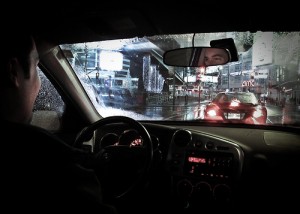 As one who used to travel extensively around the holidays a lot (when my Mom was still alive), I can vouch for the fact that folks drive particularly crazily this time of year. We’re in a big hurry and have little time to get things done, so we speed way up. Don’t give in to that temptation! Why? Check out this article form the National Post:
As one who used to travel extensively around the holidays a lot (when my Mom was still alive), I can vouch for the fact that folks drive particularly crazily this time of year. We’re in a big hurry and have little time to get things done, so we speed way up. Don’t give in to that temptation! Why? Check out this article form the National Post:
>>Christmas: The Deadliest Day Of The Year: Study
A new U.S. analysis of mortality rates during different times of year found that people are more likely to die during the holidays — notably on Christmas and New Year’s Day — and researchers cannot explain the yearly spike.
After analyzing all official United States death certificates over the 25-year period between 1979 and 2004, a trio of sociologists identified an excess of 42,325 natural deaths — that is, above and beyond the normal seasonal winter increase — in the two weeks starting with Christmas.
 In the article in the journal Social Science & Medicine, researchers David Phillips, Gwendolyn Barker and Kimberly Brewer report that mortality in general rises during the Christmas season.
In the article in the journal Social Science & Medicine, researchers David Phillips, Gwendolyn Barker and Kimberly Brewer report that mortality in general rises during the Christmas season.
Deaths in a hospital setting increase tremendously on the holidays themselves.
More people die in hospital emergency wards, or arrive dead on arrival, on Christmas, Boxing Day and New Year’s Day than on any other days of the year.
“It’s not trivial,” said Mr. Phillips, a professor of sociology at the University of California at San Diego. “We looked at all cause categories and, for nearly every one, we found an excess of deaths — particularly for people who are dying rapidly, like dead-on-arrival or dying in the emergency department.”
In general, Mr. Phillips said the team’s analysis of some 57.5-million death certificates shows the chance of dying during this holiday period increases “somewhere between 3% and 9%, depending on the demographic group you’re looking at, and somewhere between 1% and 10%, depending on what cause of death you’re looking at.”
Less clear are the reasons behind this fatal phenomenon.
With cancer, for example, the rise in Christmas and New Year’s emergency room and dead-on-arrival deaths is cancelled out by a drop in cancer deaths in other medical settings, such as in-patient clinics. Mr. Phillips said patients at the end of their lives are likely being transferred out of the hospital to die at home, but then brought to hospital when their conditions worsen toward the end.
With deaths from other causes, however, the increases are evident in every medical setting, leaving researchers to wonder what mechanism causes the calendar-specific spikes.
“It’s speculated that psychological stress can make a difference,” Mr. Phillips said. “But to make a difference so quickly and so precisely bang-on Christmas and [New Year’s Day], for a huge range of diseases, makes it seem unlikely as a broad-scale explanation.”
Also plausible. but unlikely, is the possibility of sick people postponing death in order to reach these symbolic occasions. “If that were the case, you’d expect not only a peak on the holiday but a compensatory drop in deaths before the holiday,” Mr. Phillips said. “No such drop is evident.”
Other explanations tested include emergency department overcrowding, winter travel, cold weather and substance abuse, none of which offered convincing evidence of driving the trend.
“The next step is for other people to follow up and figure out the mechanisms that produce this,” Mr. Phillips said. “For now, the message is to pay attention to your health, and to your health resources, particularly on these two occasions.”
Mr. Phillips and two other University of California at San Diego researchers found another correlation between the holidays and a spike in deaths. They authored a paper linking sudden infant death syndrome with alcohol use. In the paper, which appeared last month in the journal Addiction, titled “Alcohol as a risk factor for SIDS,” they concluded that crib death claims 33% more infants on New Year’s Day than would have been expected based on data from the days before and after. The researchers hypothesized that alcohol consumption by caregivers is to blame.
The researchers concluded: “These comparison measures indicate that the largest spikes in alcohol consumption and in SIDS … occur on New Year; alcohol consumption and SIDS increase significantly on weekends; and children of alcohol-consuming mothers are much more likely to die from SIDS than are children of non-alcohol-consuming mothers.”
The reseachers noted two other, smaller single-day jumps in crib deaths in U.S. data: a 14% spike on July 5, the day after Independence Day, and an 18% boost on April 20, which the authors noted is a “counterculture holiday devoted to the celebration of cannabis consumption.”
The researchers noted no blips in SIDS cases on July 4 itself, or on Christmas Day.<<
Let’s change the mood some and enjoy some holiday fare from Christine Wyrtzen:
« Christmas: My Fascination With Joseph Christmas: I Remember Christmas »
